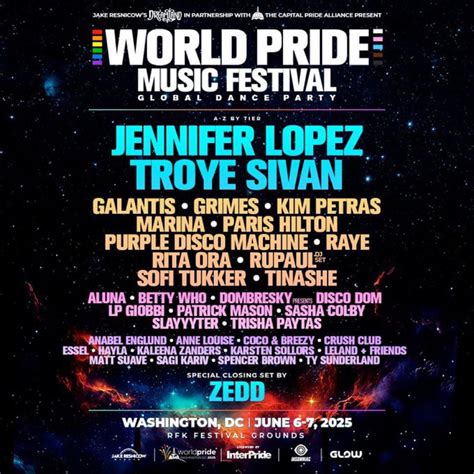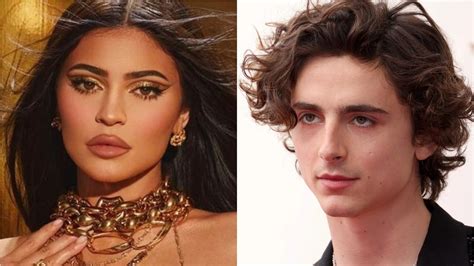
Jennifer Lopez electrified the stage at WorldPride in New York City, commanding attention with a series of daringly high-cut bodysuits that became the defining element of her performance, celebrating love, unity, and self-expression.
Jennifer Lopez delivered a dazzling performance at WorldPride in New York City, captivating the audience with a medley of her greatest hits and a visual spectacle highlighted by a series of striking, high-cut bodysuits. The performance, which took place on a vibrant and energetic stage, underscored themes of love, acceptance, and unity, resonating deeply with the spirit of the WorldPride celebration. Lopez’s sartorial choices, particularly the revealing and empowering bodysuits, sparked considerable buzz and became a defining aspect of the show, emphasizing her confidence and celebrating the LGBTQ+ community.
Lopez’s performance was not just a musical showcase but a powerful statement of solidarity with the LGBTQ+ community, utilizing her platform to amplify messages of inclusivity and equality. Throughout the show, she interacted with the audience, expressing her gratitude for their unwavering support and emphasizing the importance of celebrating individuality. The high-cut bodysuits, designed to accentuate her figure and exude confidence, symbolized a celebration of the body and self-acceptance, aligning perfectly with the themes of Pride.
The choice of wardrobe was meticulously curated to complement the high-energy performance and reinforce the message of empowerment. Each bodysuit, distinct in its design and embellishments, contributed to the visual narrative of the show, creating a cohesive and impactful experience for the audience. The revealing nature of the outfits was not merely for aesthetic appeal but served to challenge conventional norms and celebrate freedom of expression, a core tenet of the Pride movement.
The performance included renditions of some of Lopez’s most iconic songs, each carefully selected to resonate with the themes of love and empowerment. The staging, lighting, and choreography were all synchronized to enhance the overall impact of the show, creating a sensory experience that left a lasting impression on the audience. Lopez’s interaction with the dancers and the seamless transitions between songs further demonstrated her commitment to delivering a polished and meaningful performance.
The high-cut bodysuits, in particular, became a focal point of discussion following the show, with many praising Lopez for her boldness and confidence. Social media platforms were flooded with images and videos of the performance, with fans expressing their admiration for her physique, her artistry, and her unwavering support for the LGBTQ+ community. Fashion critics also weighed in, noting the strategic use of wardrobe to convey messages of empowerment and self-love.
Lopez’s decision to wear such revealing outfits at a Pride event was seen by many as a powerful statement of defiance against societal norms and expectations. By embracing her sexuality and showcasing her body with confidence, she sent a message of acceptance and self-love to viewers of all backgrounds. This act of defiance was particularly meaningful in the context of the Pride celebration, which is rooted in the struggle for LGBTQ+ rights and the fight against discrimination.
The use of fashion as a form of activism is not new, but Lopez’s decision to incorporate it into her WorldPride performance demonstrated her understanding of the power of visual communication. The high-cut bodysuits became a symbol of empowerment, encouraging individuals to embrace their bodies and express themselves authentically. This message resonated deeply with the audience, who responded with enthusiastic applause and support.
Beyond the visual spectacle, Lopez’s performance also included moments of heartfelt connection with the audience. She spoke about the importance of love and acceptance, emphasizing that everyone deserves to be treated with dignity and respect. These messages of inclusivity were particularly poignant in the context of the Pride celebration, which serves as a reminder of the ongoing struggle for LGBTQ+ rights around the world.
The WorldPride performance was a testament to Lopez’s enduring appeal as an entertainer and her commitment to using her platform for social good. By combining her musical talent with a powerful message of empowerment, she created an experience that was both entertaining and meaningful. The high-cut bodysuits, while visually striking, were ultimately a symbol of her dedication to promoting self-love, acceptance, and equality.
The impact of Lopez’s performance extended far beyond the stage, sparking conversations about body image, sexuality, and the importance of representation. Her decision to embrace her body and express herself authentically inspired countless individuals to do the same, demonstrating the power of celebrity influence in shaping cultural norms and values. The legacy of the WorldPride performance will undoubtedly continue to resonate for years to come, serving as a reminder of the importance of celebrating diversity and fighting for equality.
The high-cut bodysuit trend, often associated with performers like Jennifer Lopez and Beyoncé, has been embraced for its bold and empowering aesthetic. These garments, characterized by their dramatically high leg openings, accentuate the wearer’s figure while projecting an image of confidence and self-assuredness. The style draws inspiration from various sources, including vintage athletic wear, dance costumes, and high-fashion designs, blending elements of athleticism, sensuality, and avant-garde aesthetics.
One of the primary appeals of the high-cut bodysuit lies in its ability to elongate the legs and create the illusion of a taller, leaner silhouette. The elevated leg openings expose more of the upper thigh, drawing the eye upward and creating a visual extension of the legs. This effect is particularly flattering for individuals with shorter legs or those seeking to create a more streamlined appearance.
Moreover, the high-cut design can enhance the wearer’s curves, accentuating the hips and waistline. The form-fitting nature of the bodysuit hugs the body in all the right places, creating a sculpted and defined silhouette. This can be particularly empowering for individuals who want to celebrate their natural curves and project an image of confidence and body positivity.
The high-cut bodysuit is often crafted from materials that provide both support and comfort. Stretch fabrics like spandex, lycra, and nylon blends are commonly used to create a snug and flattering fit. These materials offer a degree of compression that can help smooth out imperfections and create a more streamlined appearance. Additionally, they allow for freedom of movement, making the bodysuit suitable for dancing, exercising, or other activities that require flexibility.
The versatility of the high-cut bodysuit also contributes to its popularity. It can be styled in a variety of ways to create different looks, ranging from casual to glamorous. For a casual daytime look, it can be paired with jeans, shorts, or a skirt, and layered under a jacket or cardigan. For a more formal occasion, it can be dressed up with heels, jewelry, and a statement skirt or pants.
The high-cut bodysuit has become a staple in the wardrobes of many celebrities and fashion influencers, who often showcase the garment in their social media posts and public appearances. This exposure has further popularized the trend, making it more accessible and desirable to a wider audience. Celebrities like Jennifer Lopez, Beyoncé, and Kim Kardashian have all been spotted wearing high-cut bodysuits, cementing the garment’s status as a fashion-forward and empowering choice.
The trend is not without its critics, however. Some argue that the high-cut design is overly revealing and inappropriate for certain settings. Others express concerns about the potential for body shaming and unrealistic beauty standards, as the garment is often showcased on individuals with idealized body types. Despite these criticisms, the high-cut bodysuit continues to be a popular and empowering choice for many women, who appreciate its ability to accentuate their figures and project an image of confidence and self-assuredness.
In the broader context of fashion history, the high-cut bodysuit can be seen as a contemporary interpretation of earlier trends, such as the leotard and the swimsuit. These garments, which were once primarily associated with athletic activities, have gradually evolved into fashion staples, blurring the lines between sportswear and everyday wear. The high-cut bodysuit represents a further evolution of this trend, incorporating elements of sensuality and empowerment to create a garment that is both stylish and confidence-boosting.
The design of the high-cut bodysuit also reflects broader cultural shifts towards body positivity and self-acceptance. As society becomes more accepting of diverse body types and celebrates individuality, garments like the high-cut bodysuit, which accentuate the wearer’s natural curves, are becoming increasingly popular. This trend suggests a move away from traditional beauty standards and towards a more inclusive and empowering view of femininity.
The enduring popularity of the high-cut bodysuit can be attributed to its ability to combine style, comfort, and empowerment. It is a garment that allows women to feel confident, comfortable, and stylish, whether they are dancing on stage, working out at the gym, or simply going about their daily lives. The high-cut bodysuit represents a powerful statement of self-acceptance and body positivity, making it a trend that is likely to remain popular for years to come.
Jennifer Lopez’s performance at WorldPride, and her choice of attire, underscore the evolving relationship between fashion, performance, and social activism. Her decision to wear high-cut bodysuits was not merely a stylistic choice but a deliberate act of empowerment and solidarity with the LGBTQ+ community. This fusion of entertainment and social commentary reflects a broader trend in contemporary culture, where celebrities and performers are increasingly using their platforms to advocate for social change and challenge conventional norms.
The high-cut bodysuits worn by Lopez served as a visual representation of body positivity and self-acceptance, encouraging viewers to embrace their own bodies and express themselves authentically. This message resonated particularly strongly within the context of the Pride celebration, which is rooted in the struggle for LGBTQ+ rights and the fight against discrimination. By showcasing her confidence and celebrating her sexuality, Lopez sent a powerful message of inclusivity and acceptance to viewers of all backgrounds.
The use of fashion as a form of activism is not a new phenomenon, but Lopez’s performance at WorldPride demonstrated the continued relevance and power of this approach. Throughout history, clothing has been used to express identity, challenge authority, and advocate for social change. From the suffragettes who wore white to symbolize purity and solidarity to the punks who used clothing to express rebellion and nonconformity, fashion has consistently served as a powerful tool for social and political expression.
In the context of the LGBTQ+ rights movement, clothing has played a particularly important role in challenging gender norms and expressing queer identity. Drag queens, for example, have long used clothing and makeup to subvert traditional gender roles and create spaces for queer expression. Similarly, the adoption of certain fashion trends by the LGBTQ+ community has often served as a form of code, allowing individuals to identify and connect with one another in a heteronormative society.
Lopez’s decision to wear high-cut bodysuits at WorldPride can be seen as a continuation of this tradition, using fashion to express solidarity with the LGBTQ+ community and challenge conventional norms. The revealing nature of the outfits was not merely for aesthetic appeal but served to challenge societal expectations and celebrate freedom of expression, a core tenet of the Pride movement.
Moreover, Lopez’s performance highlighted the evolving role of celebrities and performers in contemporary society. In an era of social media and instant communication, celebrities have the power to reach millions of people with their messages and influence public opinion on a wide range of issues. As a result, many celebrities are increasingly using their platforms to advocate for social change and raise awareness about important causes.
Lopez’s involvement in the WorldPride celebration is just one example of this trend. Other celebrities, such as Angelina Jolie, Leonardo DiCaprio, and Oprah Winfrey, have also used their fame and influence to advocate for social and environmental causes. This trend reflects a growing expectation among the public that celebrities should use their platforms for good and contribute to society in meaningful ways.
However, the use of celebrity influence for social activism is not without its challenges. Some critics argue that celebrities are often out of touch with the realities faced by ordinary people and that their involvement in social causes is often superficial or self-serving. Others express concern that celebrity activism can distract from the work of grassroots activists and organizations that are working on the ground to address social problems.
Despite these challenges, the potential for celebrity influence to effect positive social change is undeniable. When celebrities use their platforms responsibly and authentically, they can raise awareness about important issues, inspire action, and contribute to a more just and equitable world. Lopez’s performance at WorldPride, and her choice of attire, serve as a powerful example of how fashion, performance, and celebrity influence can be combined to promote social activism and celebrate diversity.
The reaction to Jennifer Lopez’s WorldPride performance and her high-cut bodysuits was multifaceted, encompassing praise for her bold fashion choices and expressions of empowerment, alongside some criticisms regarding the revealing nature of her outfits.
Many celebrated Lopez for her confident and unapologetic embrace of her body. Fans lauded her figure and praised her for defying ageist stereotypes. The high-cut bodysuits were seen as a symbol of self-love and body positivity, inspiring others to embrace their own bodies and express themselves authentically. Social media platforms buzzed with positive comments, with many users expressing admiration for Lopez’s physique, her artistry, and her unwavering support for the LGBTQ+ community.
Members of the LGBTQ+ community also expressed gratitude for Lopez’s solidarity and support. Her performance was seen as a powerful statement of inclusivity, demonstrating her commitment to fighting for equality and justice for all. The high-cut bodysuits, in particular, were interpreted as a celebration of queer identity and a challenge to heteronormative beauty standards.
Fashion critics generally applauded Lopez’s sartorial choices, noting the strategic use of wardrobe to convey messages of empowerment and self-love. Some critics highlighted the influence of vintage athletic wear and dance costumes on the design of the bodysuits, while others praised Lopez for her ability to blend high fashion with a pop sensibility. The outfits were seen as a bold and innovative statement, solidifying Lopez’s status as a fashion icon.
However, not all reactions were positive. Some critics argued that the high-cut design was overly revealing and inappropriate for a public performance. These critics expressed concern that Lopez’s outfits could contribute to the objectification of women and reinforce unrealistic beauty standards. Others questioned whether the revealing nature of the bodysuits was necessary to convey a message of empowerment.
Some observers also raised concerns about cultural appropriation, particularly regarding the use of certain design elements that may have drawn inspiration from marginalized communities. These concerns highlighted the importance of cultural sensitivity and the need for designers and performers to be mindful of the potential impact of their choices.
The mixed reactions to Lopez’s WorldPride performance underscore the complexities of navigating issues of body image, sexuality, and representation in contemporary culture. While many celebrated her confident embrace of her body, others expressed concerns about the potential for objectification and the perpetuation of unrealistic beauty standards. These differing perspectives reflect the ongoing debates surrounding the role of fashion and celebrity in shaping cultural norms and values.
In the wake of the performance, discussions about body positivity and self-acceptance became more prominent. Many commentators argued that it is important to celebrate diverse body types and challenge the narrow beauty ideals that are often promoted in the media. Others emphasized the importance of critical thinking and the need to question the messages that are conveyed through fashion and advertising.
The controversy surrounding Lopez’s high-cut bodysuits also highlighted the challenges of balancing artistic expression with social responsibility. Performers and designers must navigate a complex landscape of ethical considerations, including cultural sensitivity, body image, and representation. The reactions to Lopez’s performance underscore the importance of ongoing dialogue and critical reflection on these issues.
Ultimately, the impact of Jennifer Lopez’s WorldPride performance will be shaped by the ongoing conversations and debates that it has sparked. While some may view her high-cut bodysuits as a symbol of empowerment, others may see them as a reflection of problematic beauty standards. Regardless of one’s perspective, the performance has undoubtedly contributed to a broader discussion about body image, sexuality, and the role of fashion in contemporary culture.
The long-term impact of Lopez’s performance may also depend on how it is remembered and interpreted in the years to come. As cultural norms and values continue to evolve, the significance of her choices may shift. It is possible that her performance will be seen as a groundbreaking moment in the history of fashion and social activism, or it may be viewed as a more complex and ambiguous event. Only time will tell how her legacy will be shaped.
Frequently Asked Questions (FAQs):
-
What was the main highlight of Jennifer Lopez’s performance at WorldPride in New York City?
- The main highlight was her series of daringly high-cut bodysuits, which became a defining element of her performance and sparked considerable discussion about body positivity and empowerment. As Yahoo Entertainment reported, Jennifer Lopez “wows in dangerously high-cut bodysuits.”
-
What message was Jennifer Lopez trying to convey with her wardrobe choices at WorldPride?
- Lopez aimed to promote messages of love, acceptance, unity, and self-expression. The high-cut bodysuits symbolized a celebration of the body and self-acceptance, aligning perfectly with the themes of Pride and challenging conventional norms.
-
How did the audience and social media react to Jennifer Lopez’s performance and her attire?
- The reaction was largely positive, with many praising Lopez for her boldness, confidence, and unwavering support for the LGBTQ+ community. Social media platforms were flooded with images and videos of the performance, with fans expressing their admiration for her physique, artistry, and message. However, some critics raised concerns about the revealing nature of the outfits and the potential for objectification.
-
Why is the high-cut bodysuit considered an empowering fashion choice?
- The high-cut bodysuit is often considered empowering because it accentuates the wearer’s figure, elongates the legs, and projects an image of confidence and self-assuredness. It allows individuals to celebrate their bodies and express themselves authentically.
-
Did Jennifer Lopez make any explicit statements during the event supporting the LGBTQ+ community?
- While specific explicit statements weren’t directly quoted in the Yahoo Entertainment article, the performance itself, with its themes of love, acceptance, and unity, and her choice of attire, served as a strong statement of solidarity and support for the LGBTQ+ community. The article highlights that the performance underscored themes of love, acceptance, and unity, resonating deeply with the spirit of the WorldPride celebration.
-
Where did the inspiration for the high-cut bodysuit style come from?
- The high-cut bodysuit draws inspiration from various sources, including vintage athletic wear, dance costumes, and high-fashion designs. It blends elements of athleticism, sensuality, and avant-garde aesthetics.
-
What materials are commonly used to make high-cut bodysuits and why?
- High-cut bodysuits are often crafted from stretch fabrics like spandex, lycra, and nylon blends. These materials provide both support and comfort, offering a snug and flattering fit while allowing for freedom of movement. They also provide a degree of compression to smooth out imperfections.
-
How versatile is the high-cut bodysuit in terms of styling options?
- The high-cut bodysuit is very versatile. It can be styled in a variety of ways to create different looks, ranging from casual to glamorous. For a casual look, it can be paired with jeans, shorts, or a skirt, and layered under a jacket or cardigan. For a more formal occasion, it can be dressed up with heels, jewelry, and a statement skirt or pants.
-
Are there any criticisms or controversies associated with the high-cut bodysuit trend?
- Yes, some argue that the high-cut design is overly revealing and inappropriate for certain settings. Others express concerns about the potential for body shaming and unrealistic beauty standards, as the garment is often showcased on individuals with idealized body types. There can also be concerns about cultural appropriation if designs borrow from marginalized communities without proper understanding or respect.
-
How has the high-cut bodysuit evolved in the context of fashion history?
- The high-cut bodysuit can be seen as a contemporary interpretation of earlier trends, such as the leotard and the swimsuit. These garments, once primarily associated with athletic activities, have gradually evolved into fashion staples, blurring the lines between sportswear and everyday wear. The high-cut bodysuit represents a further evolution of this trend, incorporating elements of sensuality and empowerment.
-
How does Jennifer Lopez’s performance fit into the broader trend of celebrities using their platforms for social activism?
- Lopez’s performance is an example of celebrities using their platforms to advocate for social change and challenge conventional norms. Her decision to wear high-cut bodysuits was not merely a stylistic choice but a deliberate act of empowerment and solidarity with the LGBTQ+ community. This reflects a growing expectation that celebrities should use their influence for good and contribute to society in meaningful ways.
-
What are some of the challenges associated with celebrity activism?
- Some critics argue that celebrities are often out of touch with the realities faced by ordinary people and that their involvement in social causes is often superficial or self-serving. Others express concern that celebrity activism can distract from the work of grassroots activists and organizations that are working on the ground to address social problems.
-
How did the media and fashion critics respond to Jennifer Lopez’s WorldPride performance?
- Fashion critics generally applauded Lopez’s sartorial choices, noting the strategic use of wardrobe to convey messages of empowerment and self-love. Some highlighted the influence of vintage athletic wear and dance costumes on the design of the bodysuits. However, some critics raised concerns about the revealing nature of the outfits and the potential for objectification.
-
Were there any discussions about cultural appropriation related to Jennifer Lopez’s wardrobe at WorldPride?
- Some observers raised concerns about cultural appropriation, particularly regarding the use of certain design elements that may have drawn inspiration from marginalized communities. These concerns highlighted the importance of cultural sensitivity and the need for designers and performers to be mindful of the potential impact of their choices.
-
What broader societal discussions did Jennifer Lopez’s WorldPride performance spark?
- The performance sparked discussions about body image, sexuality, and the importance of representation in contemporary culture. It also highlighted the challenges of balancing artistic expression with social responsibility and the need for ongoing dialogue and critical reflection on these issues.
-
How might the long-term impact of Jennifer Lopez’s WorldPride performance be evaluated?
The long-term impact of Jennifer Lopez’s WorldPride performance might be evaluated by how it influences future trends in fashion, performance, and social activism. Assessment might also include its contribution to discussions about body image, sexuality, representation, and if her actions inspire other celebrities to use their platform to promote inclusivity and social justice. Historical context will ultimately determine the enduring significance of her artistic choices.









